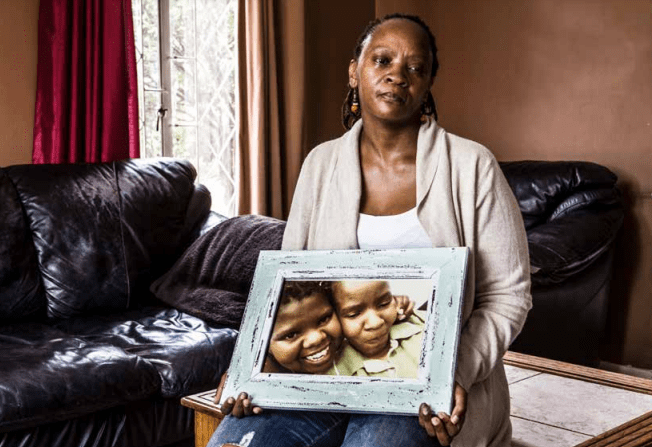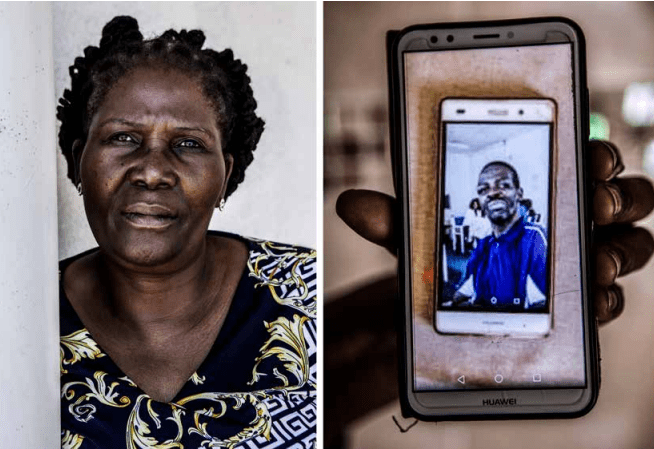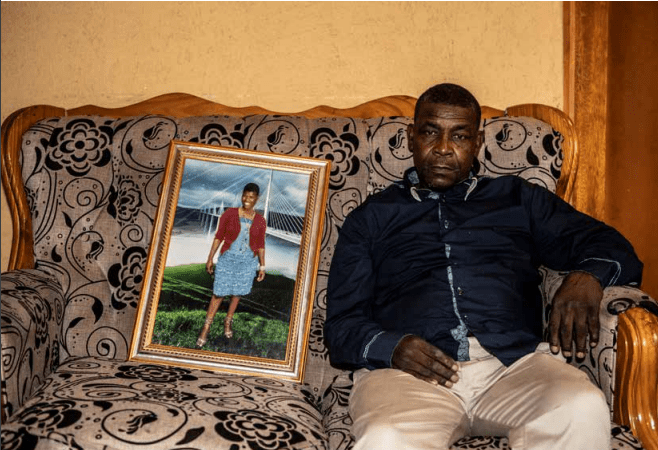The heartbreaking journeys of Life Esidimeni families
Extracts from Life Esidimeni: Portraits of Lives Lost

In 2015, events were set in motion by the Gauteng department of health that led to the deaths of 144 government mental health patients from the Life Esidimeni facility in 2016 and 2017.
On 10 July, eight years later, Judge Mmonoa Teffo found that Qedani Mahlangu, former Gauteng health MEC, and Makgabo Manamela, former director of the Mental Health Directorate, could be held responsible for the deaths of at least nine of the Life Esidimeni patients.
When writer Harriet Perlman and photographer Mark Lewis set about documenting the lives of the families whose loved ones had died in the Life Esidimeni catastrophe, they were determined to honour the dead and to recognise the suffering of those left behind.
They embarked on a journey across South Africa, holding face-to-face meetings with families who were grappling with heartbreaking loss.
This resulted in Life Esidimeni: Portraits of Lives Lost.
Here are three edited extracts from the book.
Plastic and brown paper in her stomach
It was Good Friday, 26 March 2016. The Phehla family were in church when Zimbu Maria (the family matriarch) got a call. It was about Deborah Phehla, her daughter who was intellectually disabled. Deborah had lived at the Life Esidimeni facility in Randfontein, but had been moved to Takalani only four days before.
The call was from the matron. She told Mrs Phehla that her daughter was dead. The matron said that Deborah had been healthy when she arrived, but had suddenly become ill and vomited the night before and then died.
The family was shocked. They had seen Deborah two weeks before and she was fine. That Monday, Maria and Petrus went to Takalani and asked to see Deborah’s medical records. “We wanted to see for ourselves, whether she had been sick. But there weren’t any. We tried to ask what had happened, but everyone had a different story. One person said, ‘Just ask another one.’”
Petrus and his mother were then told that Deborah’s body was with a private undertaker, Vusana Funeral Parlour, so they went there to find the body.
What they saw was completely shocking. Deborah’s arm was standing at a 90-degree angle to the rest of her body, and there was blood all over her face.
The family were determined to find out the truth. They arranged for a post-mortem and went back to Takalani.
“We wanted to see the room where Deborah had died,” Petrus says, “but when we saw it, we were shocked. It looked like a storeroom. It was small and dirty.”
The post-mortem report then revealed that there was plastic and brown paper in Deborah’s stomach when she died.
Zimbu Maria passed away in 2021.

“My mother never got over losing Deborah and her health deteriorated after my sister died,” Petrus says.
“I want to know how my sister ended up in that room alone, separate from anyone. Why did she have pieces of plastic and paper in her stomach? It haunted my mother that Deborah had been left in that room, separated from everyone else and forgotten about. That she had been starving and resorted to eating plastic and paper.”
‘Your brother is dead,’ the caller said
When Phumzile was a little girl, her brother Solly Mashigo carried her on his back to school. But then one day everything changed. It was a time of violent political unrest in South Africa. Solly was taking the train to visit his girlfriend. As he got off, he was hit on the head with a machete.
The blow to his head left him brain damaged. He couldn’t do anything for himself any longer and lived in hospitals for most of his life. “At Life Esidimeni he received the best care,” Phumzile says.
In September 2016, Phumzile received a call. She did not recognise the number, but it was Ethel Ncube from Precious Angels (an NGO in which 23 mentally ill adults died).
“Your brother is dead,” Ethel told her. “You need to collect his body.”

Phumzile knew that Life Esidimeni was going to close. But no one told her that her brother had already been moved to Precious Angels. “No one told me anything,” she says. “He was moved without my knowledge or permission.”
Phumzile found her brother at a funeral parlour called Put U 2 Rest. The address was a disused butcher’s shop. The floors were blood-stained. She was told to look through the bodies to find her brother. She had to search through 36 bodies before she found him.
“The people who did this are still walking free,” Phumzile says. “Solly was a good person. My sons miss their uncle terribly. It’s just not right.”
‘She looked so well that day’
This photograph (above) of the late Virginia Machpelah with her daughter Shanice was taken in June 2016. “She looked so well that day,” Christine remembers. “And Shanice was so happy to see her mother. I didn’t know it would be the last time I would see my sister alive.”
Virginia suffered from early-onset Altzheimer’s disease and had lived at Life Esidimeni facility in Randfontein for two years.
Two weeks after Christine had seen her sister, she received an SMS telling her that Virginia had been moved to the Cullinan Care and Rehabilitation Centre. Christine tried the number on the SMS but no one answered. Finally Daphney Ndlovu called back and told Christine that Virginia was not there, but she should try two other NGOs.
Christine spent weeks trying to find her sister.
On 25 August 2016, she received a call from Ethel Ncube, director of Precious Angels in Atteridgeville, Pretoria. Ncube told Christine that Virginia had been with her for two weeks but had just died. Christine later learnt that Ncube had lied. Virginia had actually died 10 days before this call.
What followed was a further ordeal. For two weeks Christine and her husband travelled to Atteridgeville every day in an attempt to find Virginia to identify her body.
Eventually they were told that Virginia’s body had been moved to a storage facility in Hebron. A further struggle then ensued to get the body released.
On the first day of the arbitration proceedings, the family was to suffer a further tragic loss.
Shanice, Virginia’s daughter, collapsed and died suddenly. It is believed she died of Broken Heart Syndrome. Shanice had just turned 21 years old.
Life Esidimeni: Portraits of Lives Lost is published by Jacana Media.
What's Your Reaction?





































